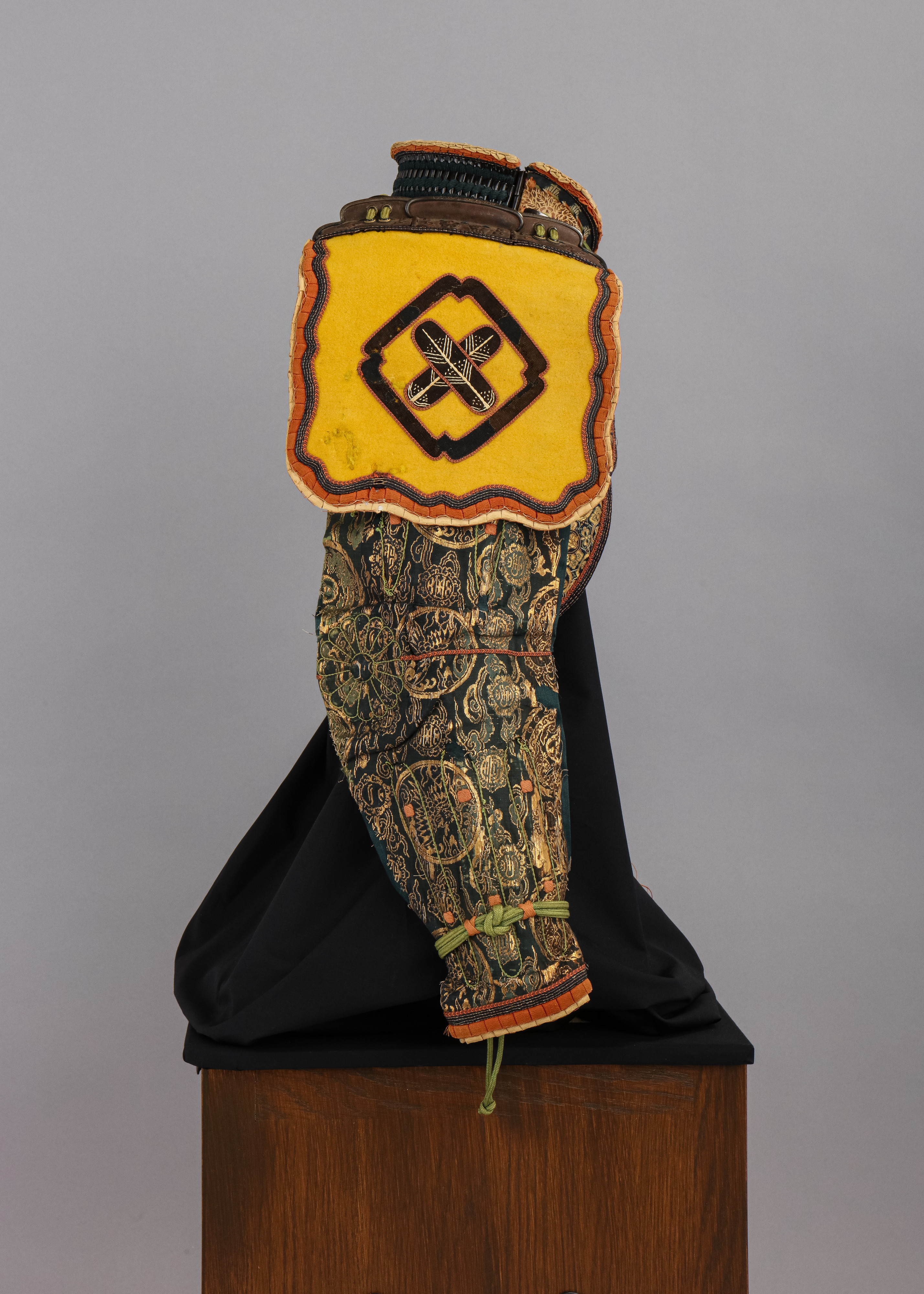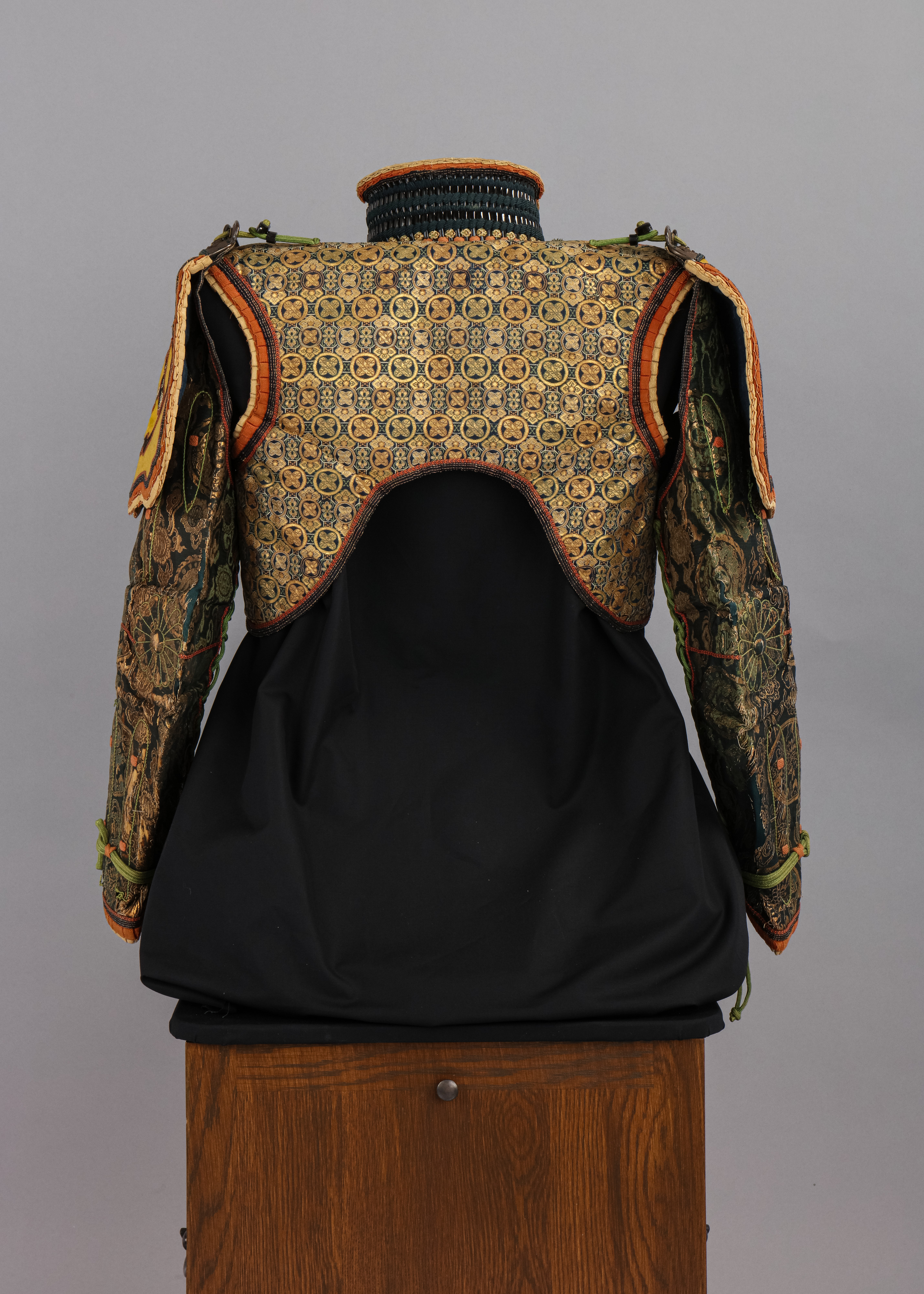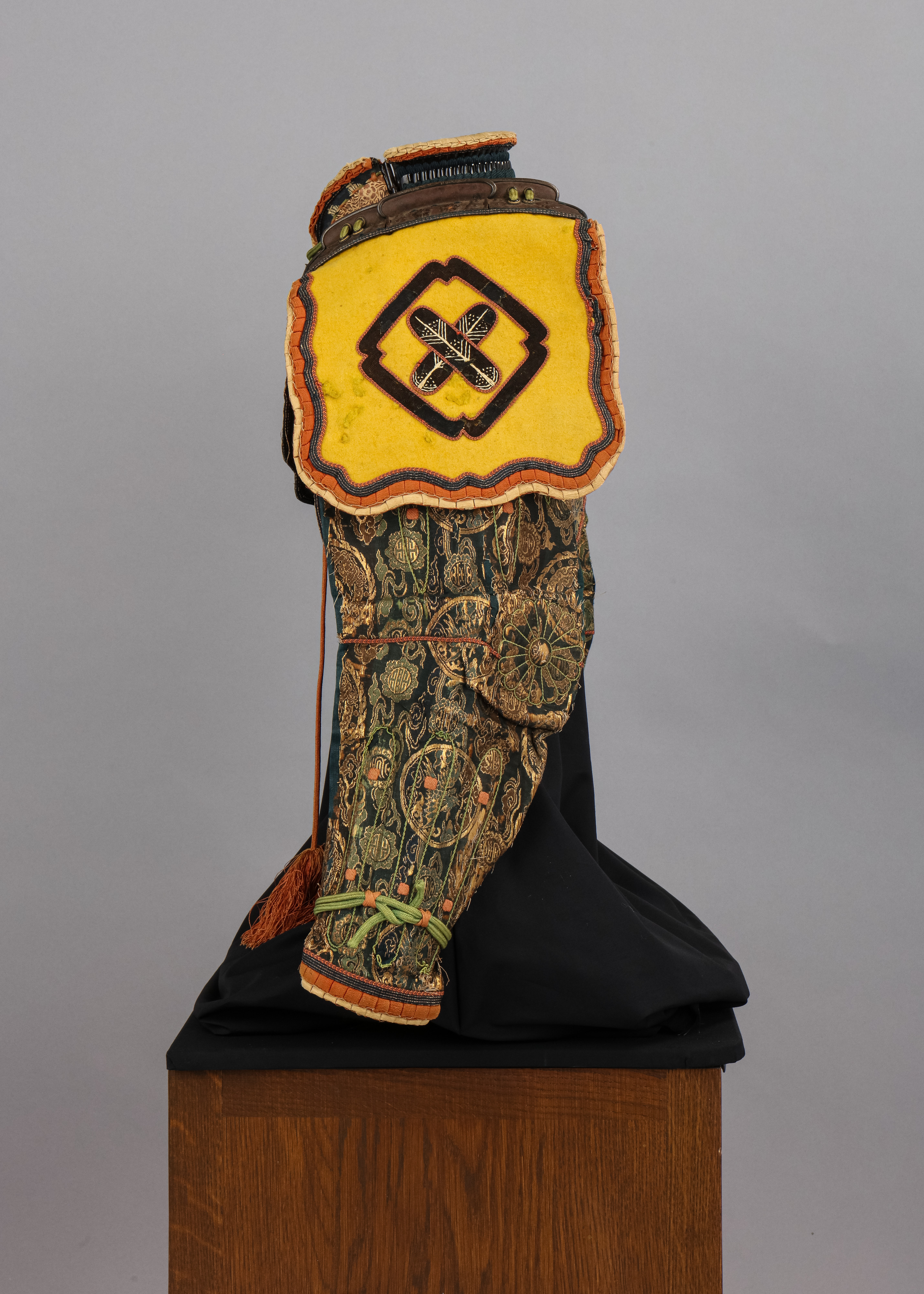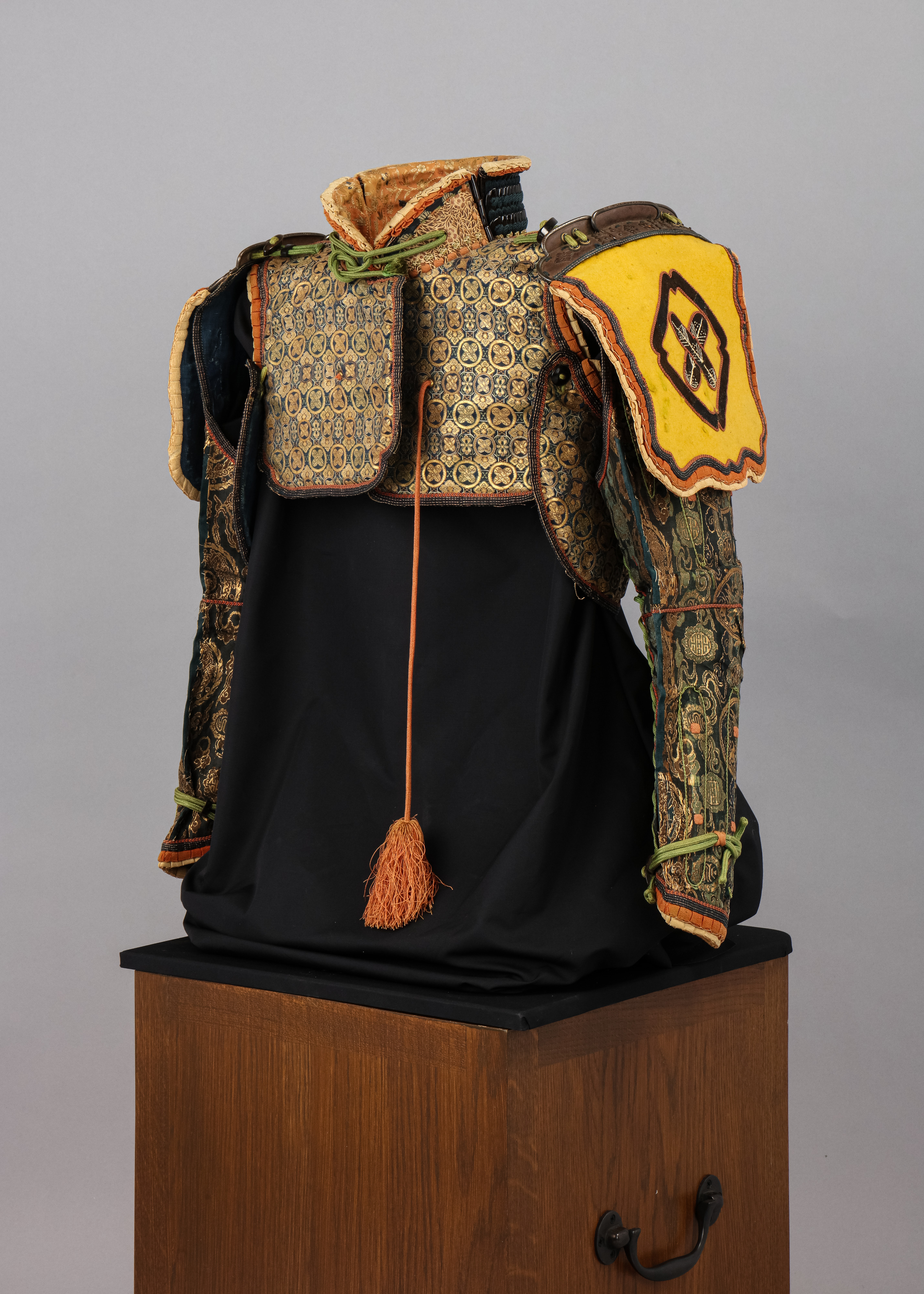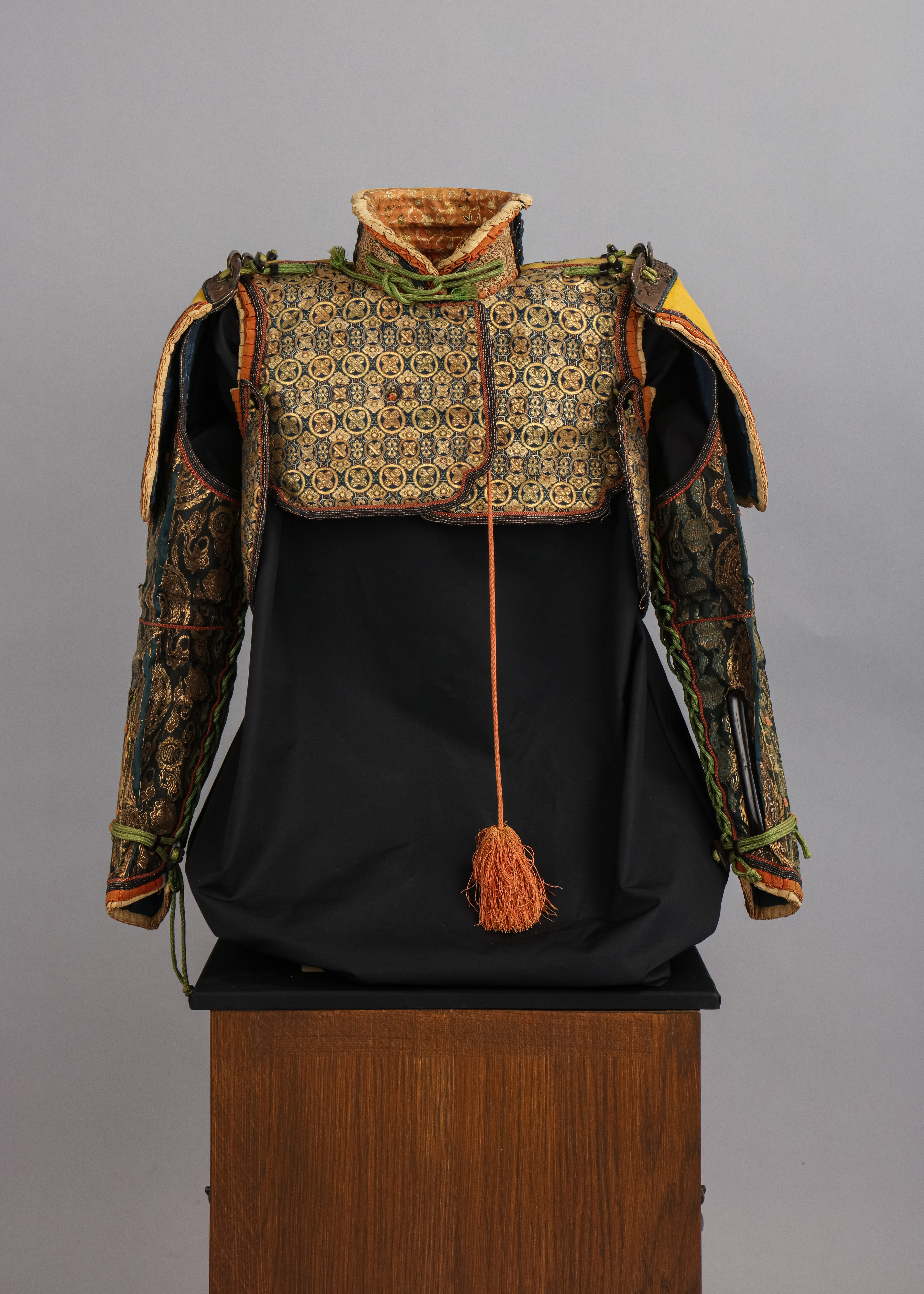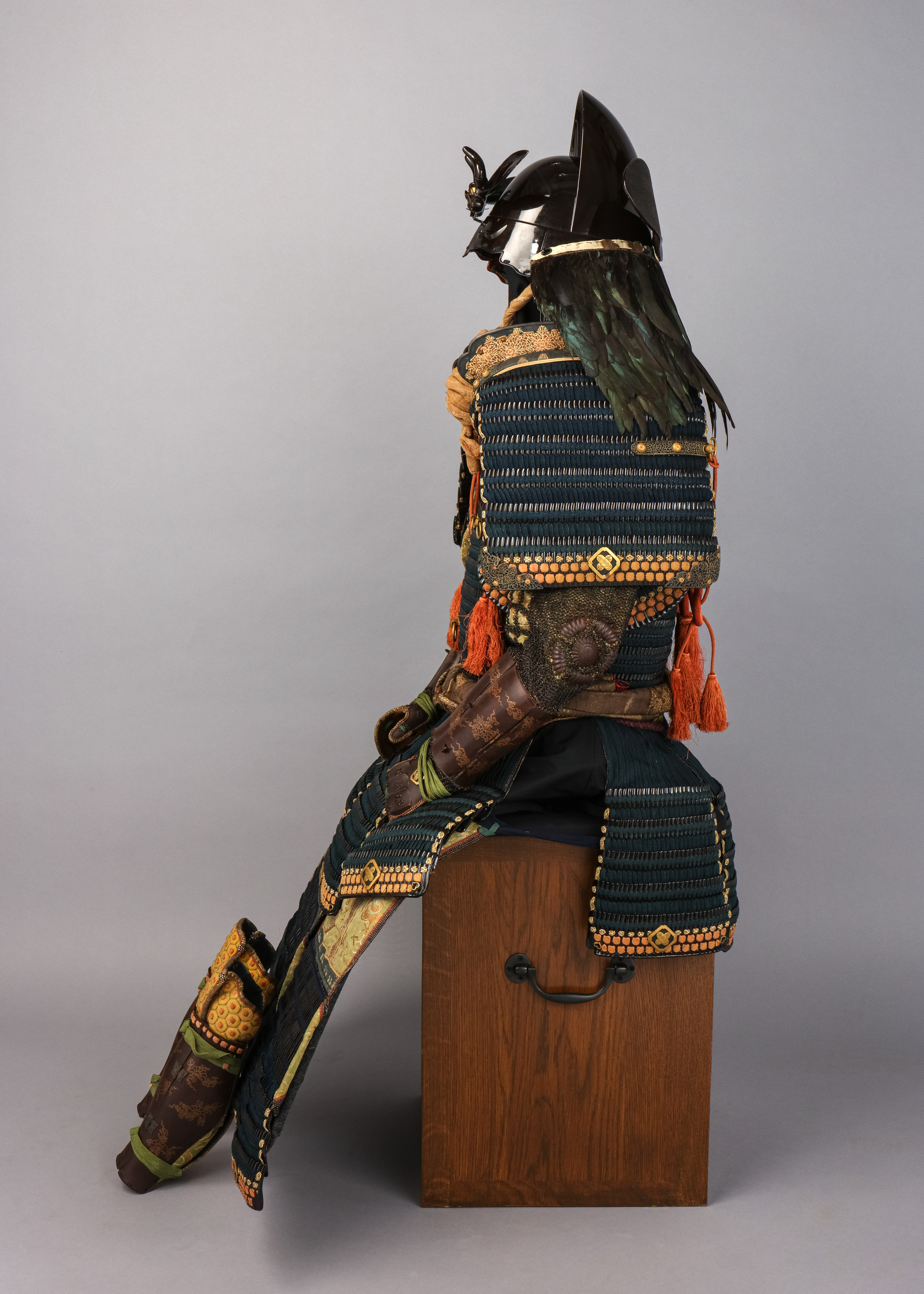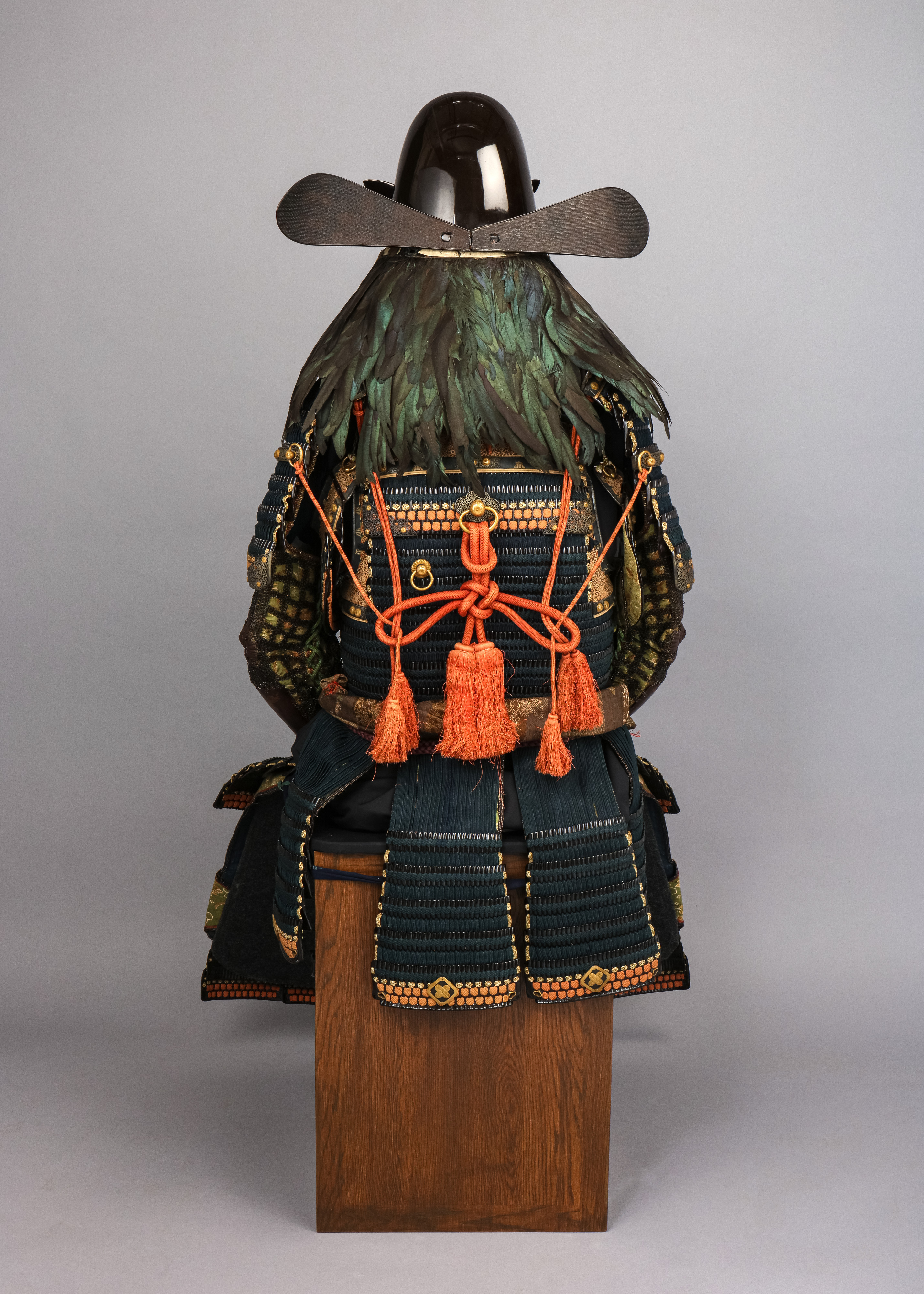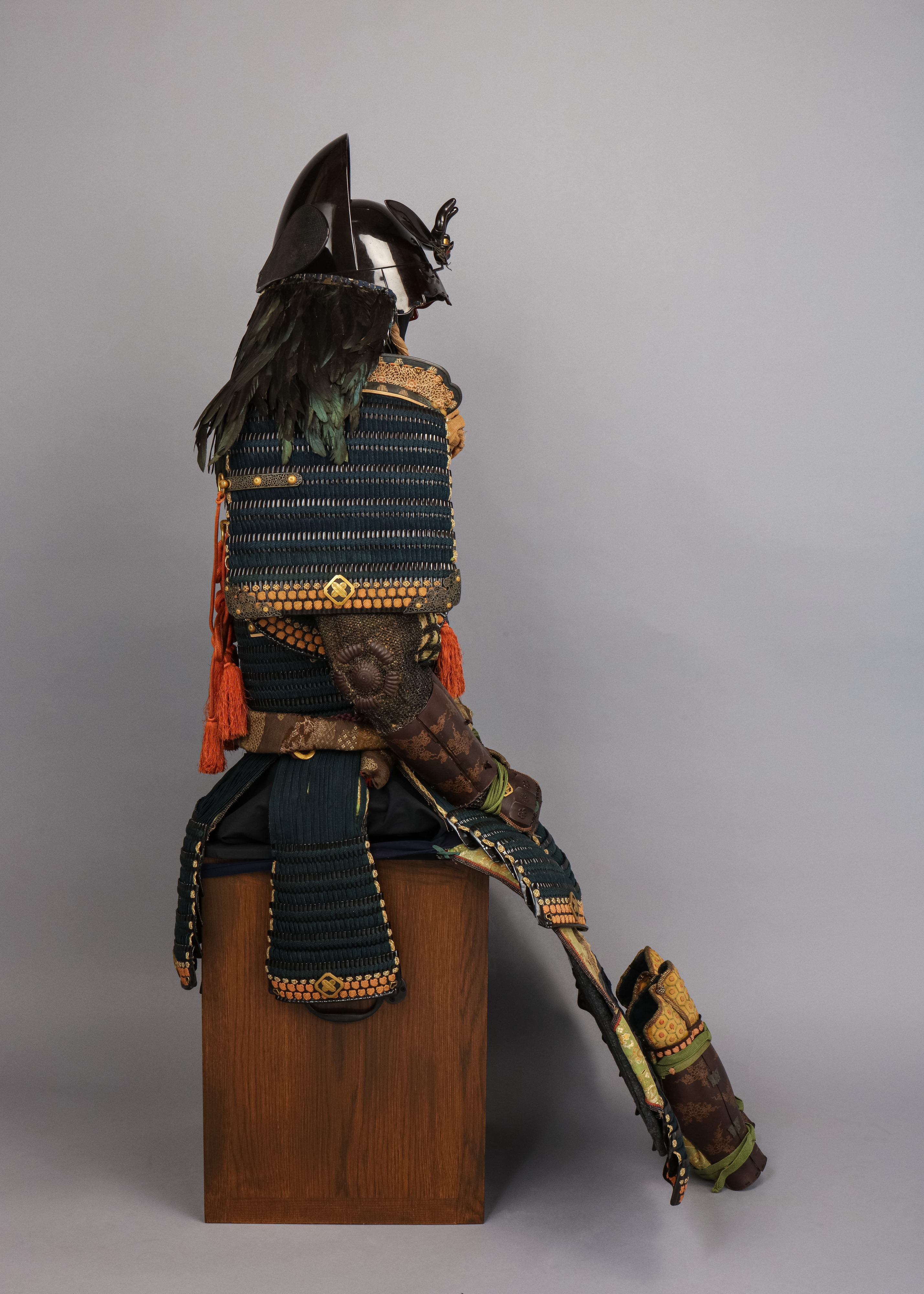Armor (Gusoku) with Box
Helmet bowl by Neo Masanobu 根尾正信 Japanese
Not on view
With its quality of workmanship and the extent of its additional elements, this suit is an outstanding example of a type of late Edo period (19th century) armors that revive traditional styles from before the sixteenth century. Following the pacification of the country in 1600, the practical use of armor waned and high-ranking warriors who were able to afford a newly made suit placed emphasis on its decorative effect. A striking feature of this suit is its additional elements, comprising an armored vest and a brocade-covered pair of sleeves with ornamental bright yellow felt shoulder guards (sode), which can be worn on less formal occasions. Although several examples exist where parts of an armor contain compartments, the use of a medicine container with spoon and an inkstone with brush as it is the case here is unique and not seen on any other known suit. The helmet is associated with the armor and dates slightly earlier (mid-18th century). Pairing helmets with other armors was a common historic practice, and the quality and style of the helmet described here certainly matches the suit.
Due to rights restrictions, this image cannot be enlarged, viewed at full screen, or downloaded.
This artwork is meant to be viewed from right to left. Scroll left to view more.


